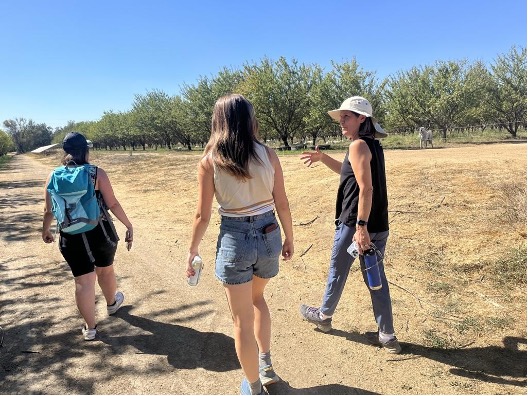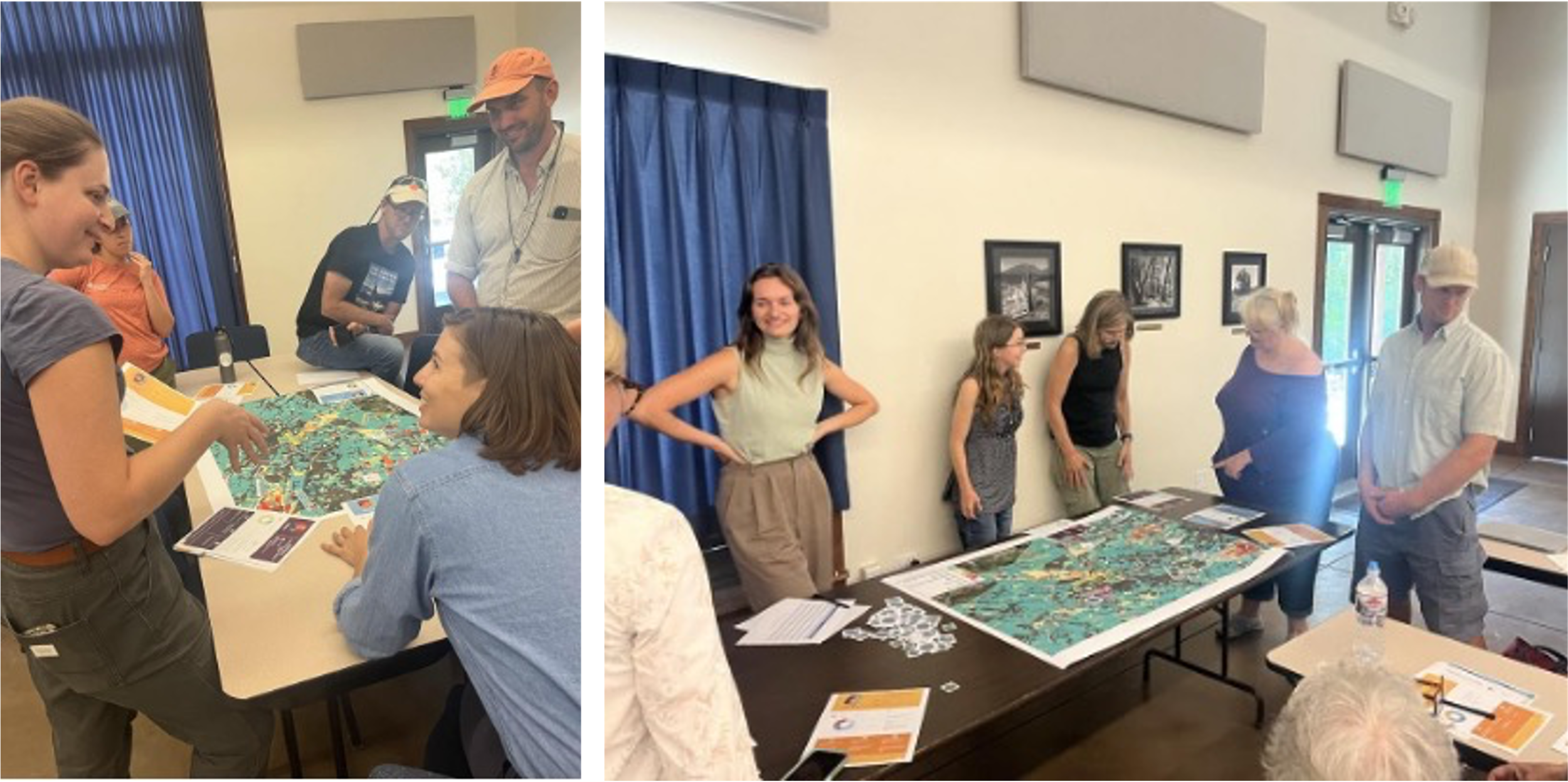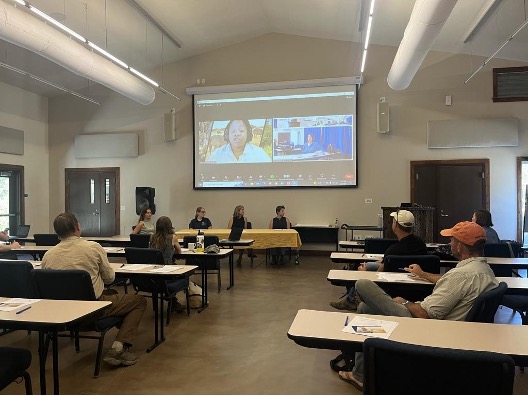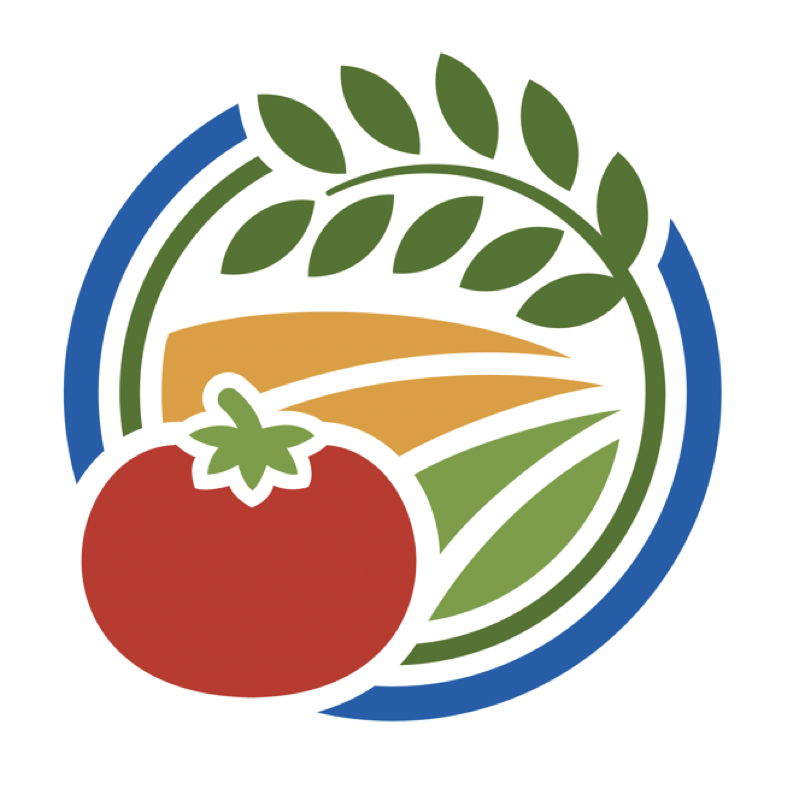Learning the benefits, challenges of integrated crop livestock systems
In summer of 2022, I had the pleasure of working for UC ANR and the Sustainable Agriculture and Research Program (SAREP) for a four-month-long internship to organize two webinars and an in-person symposium on integrated crop livestock systems (ICLS).
Pursuing a master’s in organic agriculture, I have some background knowledge on the topic, but even so I learned so much from farmer interviews and researcher panels. I knew that animals could be integrated on cropland to perform some sort of mutually beneficial task, like sheep removing intercrop cover in vineyards or ducks removing snails in orchards. However, the complexity of the system – and of the elements needed for successful implementation – was something that became very apparent to me, as well as the great potential benefits.
Our webinars and symposium were great successes and created educational and networking opportunities for the speakers and guests alike, shedding light on the practical and theoretical aspects of ICLS.

When conducting background research on ICLS to plan the events, I learned a lot about the potential benefits of this system. One allure of ICLS is its potential to contribute to nutrient cycling and soil health, as the inclusion of animals has been proven to benefit both. First, the direct deposition to the soil by way of animal manure provides plant-available nutrients to the system that can quickly and easily be utilized by target crops (Garrett et al., 2017). This manure also adds microbes to the soil, which help with nutrient cycling and creating a more resilient soil ecosystem by encouraging more biodiversity (Attwood et al., 2019).
Another key benefit is soil carbon sequestration, which is achieved by a few mechanisms. Grazing increases the resources that plants allocate to roots, increasing root biomass and thus increasing carbon stored below ground (Brewer and Gaudin, 2020). Grazing also stimulates roots to release sugars made up of carbon from the atmosphere into the surrounding soil, sequestering carbon and feeding microbes (Schuman et al., 2002).
With this background knowledge, I began planning the webinars. I conducted farmer interviews to understand the topics that were relevant and necessary to cover. I decided to make one webinar focused on orchard grazing and the other on contract grazing.
The webinars were very successful and had great turnouts, creating a lot of discussion and networking among farmers, researchers, presenters and guests. I learned a lot from these webinars myself, gaining insight into the farmer’s perspective on benefits and challenges of implementing ICLS.
I learned that one of the key benefits farmers were experiencing was the replacement of fuel-based machinery with animals and how this saved money, especially given current fuel costs. “There are times when we walk through after the sheep have been there and it almost looks like they mowed it,” said Benina Montes of Burroughs Family Farms in Denair, describing how the sheep in her almond orchards are able to replace machinery.
One farmer also noted the key benefit in creating a new flow of income by selling off lambs. Most farmers also agreed there was some undefinable benefit to having the animals out in their fields and that they added to the system simply by being there and making people happy. This leads to benefits from agritourism and public appeal as well, as people on social media and farm visitors particularly enjoy engaging with the animals. A farmer noted how this aided overall appearance, making their farm look more “natural” and signaling their efforts to advance organic regenerative farming.
“People like to see animals on social media; it speaks to the type of farming being done,” said Martin Bernal Hafner of Alta Orsa Winery in Hopland.
The webinars also shed light on the challenges of ICLS. Food safety laws for organic systems require animals be off land growing crops 90 days before harvest for crops harvested above the ground and 120 days before harvest for crops harvested on the ground. This presents a major obstacle in keeping animals on the field, as that is a critical time for them to be grazing and removing cover crops or weeds.
As explained by Benina Montes: “The biggest thing is the food safety because historically almonds have been harvested off the ground but even right now (in July) I have vegetation the sheep could be eating.” For some farmers, this makes the practice of ICLS not worth it, as they still need to mow at some point within that window.
Therefore, logistical planning is a key challenge facing farmers in implementing ICLS. This also relates to timing of contracted grazing versus having one’s own flock or herd. Since these factors were frequently mentioned by farmers during the webinars, we decided to cover them during our symposium by using a serious game to play out the scenarios of grazing crop systems.

This game, called Dynamix and developed by Julie Ryschawy of INRAE (France), was a great success, engaging participants in the topic of logistical planning and fostering cooperation to create successful ICLS systems. The game ran through theoretical scenarios where farmers played specific roles and had to interact with one another to accomplish set goals for ICLS.
The symposium also had a grant writing workshop, fencing demo, farm presentation, and sheep handling presentation. Overall the day was educational and facilitated the networking and information exchange that we had hoped for.

Together, the outreach effort of the webinars and symposium led to excellent discussions on the topic of ICLS. There are still, however, many questions, as this topic is somewhat unexplored in academic research. First, farmers want to know the actual economic benefits or tradeoffs that come from implementing livestock in cropping systems. As there are many ecological benefits that are hard to quantify, this is difficult to do.
Farmers also want solutions to food safety laws that can be prohibitive in implementing ICLS and want more research done in the sector to identify where the real risks are. Finally, farmers want to know how to best plan the logistics for their ICLS system, whether it be through contract grazing or owning their own animals, and sometimes need help achieving this.
For more information, see:
UCANR, Livestock-Integrated Cropping Systems Webinar series, 2022.
- Webinar 1: Integration of Livestock in Orchard Systems,
- Webinar 2: Contract Grazing in Orchards and Vineyards.
Resources
Attwood, G. T., et al. "Applications of the soil, plant and rumen microbiomes in pastoral agriculture." Frontiers in Nutrition 6 (2019): 107.
Brewer, K.M. and Gaudin, A.C.M. “Potential of crop-livestock integration to enhance carbon sequestration and agroecosystem functioning in semi-arid croplands. Soil Biology and Biochemistry 149: 107936.
Garrett, R. D., et al. "Social and ecological analysis of commercial integrated crop livestock systems: Current knowledge and remaining uncertainty." Agricultural Systems 155 (2017): 136-146
Schuman, G. E., et al. "Soil carbon dynamics and potential carbon sequestration by rangelands." Environmental pollution 116.3 (2002): 391-396.
